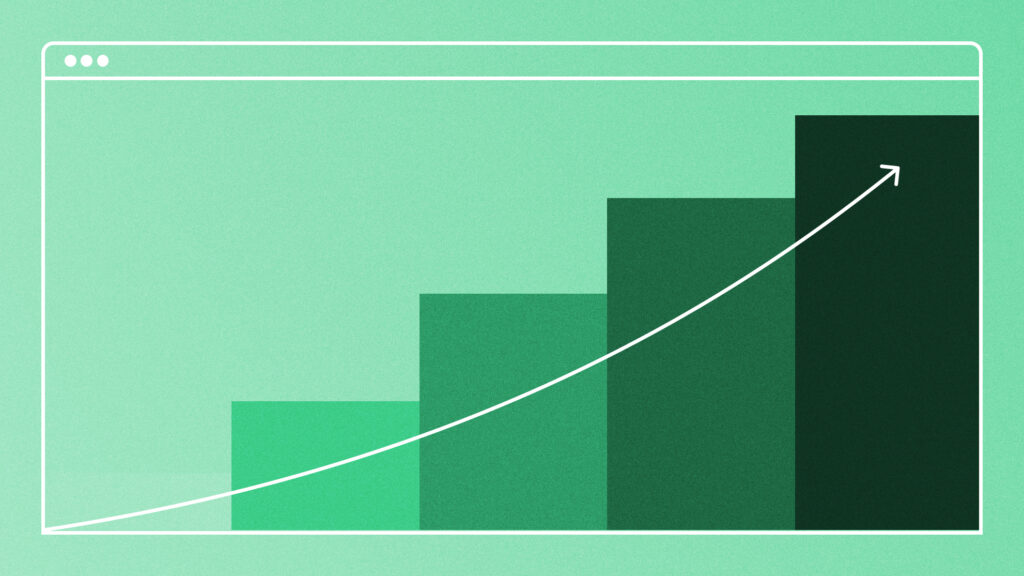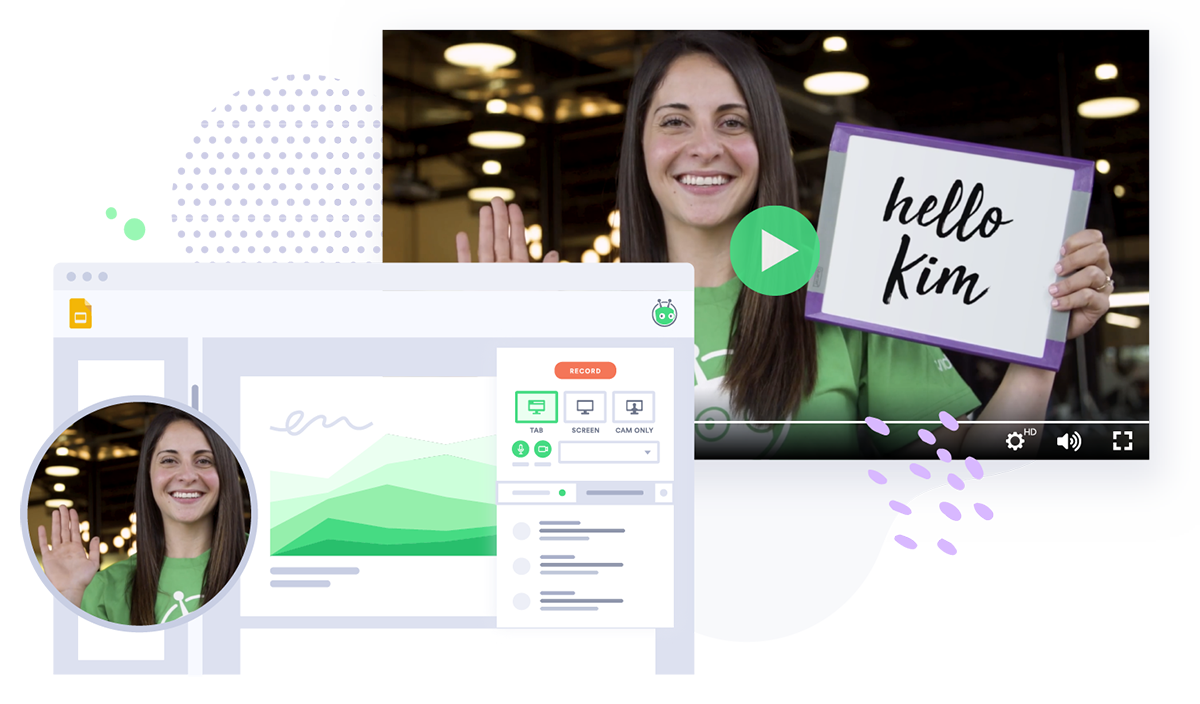How to Make a Documentary: Step-by-Step Guide
February 24, 2020·13 min read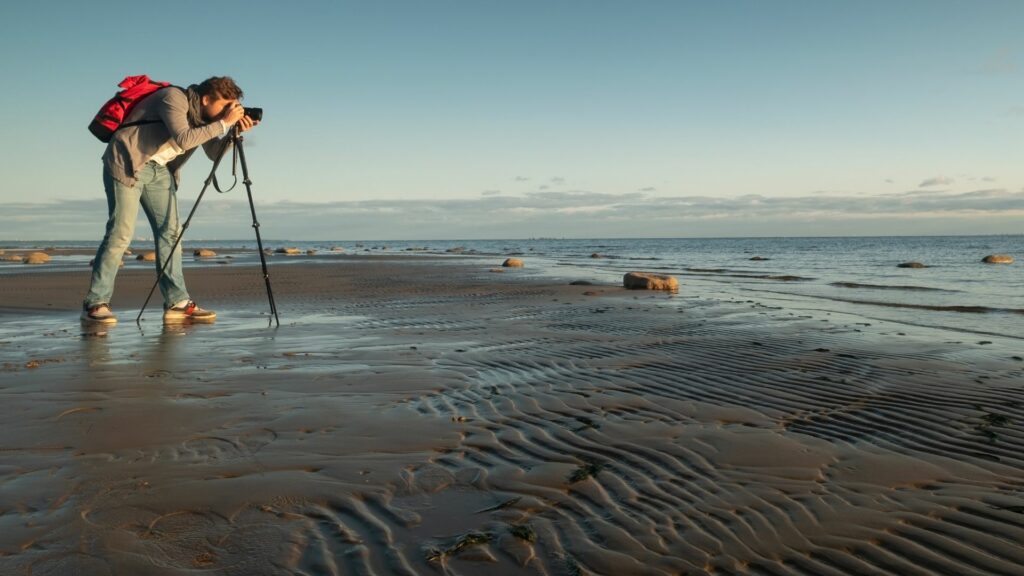
Should your brand learn how to create its own mini documentary videos? Learn why mini docs are powerful, and how Vidyard made one about the Bandit Tour.
On my way to Dreamforce, I hitchhiked 1,000 miles in a painted caravan full of people with jackets that read “Bandit Tour.” The running joke was that anytime strangers in the towns we passed through asked if we were a band, we said yes and made up a place we were playing that night.
There was a lot of laughing. But there was also a lot of holding back tears. As part of the tour, we volunteered for nonprofits and did everything from stuff backpacks full of clothing for foster kids to rip out clumps of invasive scrub grass from California’s Humboldt county beaches.
I can’t recall feeling so touched. Or so shaken to my core by acts of raw human kindness. Or so grateful that Vidyard’s CEO Michael Litt, Community Engagement Program Manager Laura Galbraith, and I were asked to join the tour, and I (as the Video Production Manager) to make a documentary about the experience.
This article is about how to make documentary videos, but it’s also about the specific documentary I made about the Bandit Tour for Good and how it came together. It covers everything from what equipment to buy (love me that DJI Osmo Pocket Gimbal) to whether you should be making a documentary at all. If it leaves you with one new idea, it’s that businesses can create great documentaries and use them to do good.
What’s a Mini-Doc?
A mini-documentary or “mini-doc” is a 10 to 30-minute nonfiction video aiming to document reality for education. It’s shorter than feature-length but also much longer than the typical two-minute marketing video on which the world seems to run. Mini docs are time-consuming to make and watch, but I think they can be immensely valuable.
What separates documentary-style videos from most marketing videos is that they aim to educate, inspire, and transform for their own sake. They connect us as people. While corporate documentaries may have tangential benefits, like allowing a company’s message to piggyback on what’s otherwise pure entertainment, they work best when they’re based on motives that are pure.
The Bandit Tour Mini Documentary
Bandit Tour is a volunteer experience organized by Traction on Demand and held every year since 2013. On it, people from the company travel from Vancouver to San Francisco for Salesforce’s Dreamforce conference. Along the way, they volunteer for nonprofits like Teen Feed and A Better Life Foundation. In that collective act of generosity, I saw a story about a culture, a team, and a group of people undergoing a transformational experience together. That’s the stuff great brand documentaries are made from.
Michael, Laura, and I joined the bandits on a tour that took seven days. In that time, I captured six hours of footage (about 1.5 hours of interviews) which I cut down into an 18-minute film.
Watch the 18-minute documentary I made about the 2019 Bandit Tour for Good edition.
How to Make a Documentary Film Step-by-Step
If you watch feature-length documentaries, you’ve probably noticed a few similarities. First, the film or trailer usually starts right in the middle of the story or the action and then jumps back to explain to viewers how they got there. (Sort of like how I started this article—right in the middle of the action.) That out-of-order intro is your hook.
More broadly, the whole documentary typically follows a classic storytelling arc of conflict, rising action, falling action, and resolution. You see this in popular documentaries like The Biggest Little Farm, This Changes Everything, Shark Water, and even in Disney Nature’s documentaries where, for the sake of connecting viewers to prairie dogs, they give rodents personalities and narrate their struggles.
1. Start with Pre-Production and Planning
The planning phase typically accounts for 50% of your time on a brand documentary (or any kind of doc). It’s that important. The better you prepare here, the smoother filming and editing go. For instance, if you know exactly what shots you’re looking for, shooting them is quick and requires fewer edits.
Ask yourself, “What’s the goal for your brand documentary?” Don’t just shoot blindly—have a thesis going in. You don’t always know the full story, especially if you’re covering an event that hasn’t happened yet, but you usually have an inkling.
On the Bandit Tour, I was given very little direction. I was simply asked to capture it and make sense of it. But I did know we’d be traveling, so I’d need to capture stable footage of our vehicles on the road for B-roll. (That’s filler footage, more on that later.) I also knew people would be having emotional experiences during their volunteer work, so I’d need to be there and ready to interview.
Sometimes subjects have requests or preferences that you have to respect. For instance, the Traction on Demand team kindly asked me not to capture nighttime footage when people were unwinding and getting to know each other over beers. So, I only filmed during the day, and that had unexpected benefits.
2. Gather Your Equipment
The better you know your equipment, the more you can focus in the moment. Nothing’s worse than seeing the opportunity for a great shot but fumbling to get the camera on the right setting.
You’ll want a lightweight kit if you’re on the road like we were at the Bandit Tour. Cameras aren’t any good if they’re big, bulky, and not with you when the action’s happening. On the tour, I brought a DJI Osmo Pocket Gimbal, a tiny handheld camera that I could keep in my jacket pocket. I also had a higher quality Sony A7III which could shoot up to 4k video. Together, that was enough.
Don’t think you need to go out and acquire a ton of expensive equipment. At the level of equipment I carried, it’s hard for people to tell the difference between that footage and higher-quality footage. The exception here, however, is sound quality. People will forgive grainy footage, but they will not forgive choppy sound.
A Standard Documentary Film Kit:
- DJI Osmo Pocket Gimbal
- Sony A7III
- Lenses
- Lavalier microphone x 2
- Monopod
- Headphones
- SD cards
- Portable hard drive
- Extra batteries
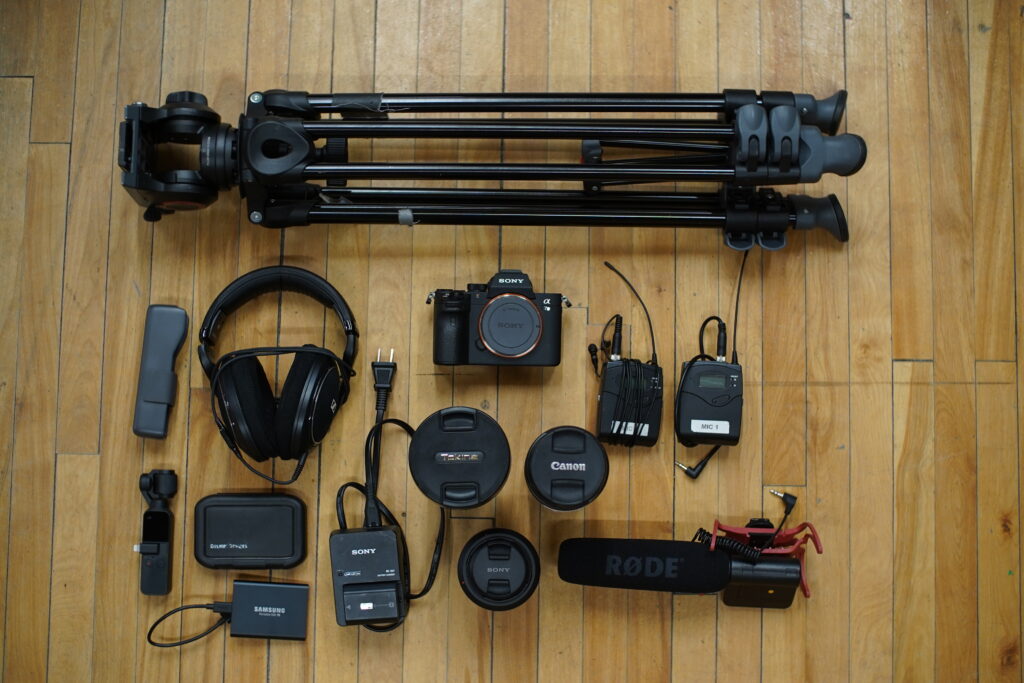
3. Focus On the Story, Not the Gear
High-quality footage is nice. But you have to make sure that the story you’re looking to tell is in place far more than you need to use flashy equipment. So, again, stick to a lightweight gear kit.
On the Bandit Tour, I was just one person. In that situation, you have to figure out how to make a documentary by yourself, and you can’t be lugging a trunk everywhere or have enough time to set it up and break it down.
Would I love to have a RED cinema camera and capture this stuff in 8K? Definitely. But anybody that’s worked with a RED cinema camera knows how finicky they are to set up. It’s not really realistic for an on-the-fly shoot when you need a volume collection versus hoping to nail one good shot.
4. Collect a Variety of Shots
Documentaries are a collage of different shots. You don’t always know what you need, giving you (or your editor) many options. If you have a strong sense of how documentaries are constructed, you’ll know what shots to look for and will have a mental checklist. For instance, “Oh, I need a strong opener and a strong closer. Where are those pieces?”
On the Bandit Tour, I did have some backup. Sacha Vanhecke from Traction on Demand was filming their own brand documentary about the startups we’d helped. Though we were working on different projects, sometimes we’d ask each other to capture B-roll from whatever we were doing.
Common Types of Documentary Shots:
- Talking Head: Someone speaking to the camera.
- Vlog: An informal shot of a narrator—possibly the cameraman—speaking into a camera that they either set up or are holding.
- A-Roll: Your best footage, often of interviews, which narrate the central theme.
- B-Roll: Contextual footage for transitions or to cut to while people are speaking.
Plus, in the cutting room, you can add:
- Animations: Watch The Biggest Little Farm, and you’ll see that they animated much of the introduction, probably because they didn’t have all the right footage.
- Text Overlays: Titles and subtitles help viewers orient themselves so they know where and when the events are taking place.
Where Should I Use B-Roll?
B-roll is wonderful footage to show while people are talking. A talking head segment can get monotonous, so cut to b-roll of the surrounding area or, even better, something related to what they’re talking about.
During the Bandit Tour, I knew the road trip would be central to the theme, so I captured lots of B-Roll of the car, the bus, and all the branding elements on the vehicles. We’d use walkie-talkies to get some of it so I could tell the other vehicles in our convoy, “Slow down the bus so I can drive past you and get a cool shot.”
When you watch a documentary interview, you see just a tiny fraction of all the conversations. If you have a good sense of where your documentary is going and what parts you need to flesh out, you can use your questions to guide people to discuss things you want to cover. Here are some interviewing tips I’ve picked up over the years:
- Choose settings that are conducive to conversation
- Choose interviewees who are emotive
- Choose good lighting
- Test your sound beforehand
- Go off-script—the question list is your safety net, but the gold comes from the in-between stuff
- Don’t look down at your notes too much; you disconnect from the interviewee
- Interview people before, during, and after events: Anticipate, describe, reflect
This is one of my favorite interviews from the documentary. It was with Braden Ford, UX Design Lead from Traction on Demand, and I thought he had an interesting story to tell. During the tour, he spent his birthday giving back to an organization that really needed the help, which was a very unique experience for him.
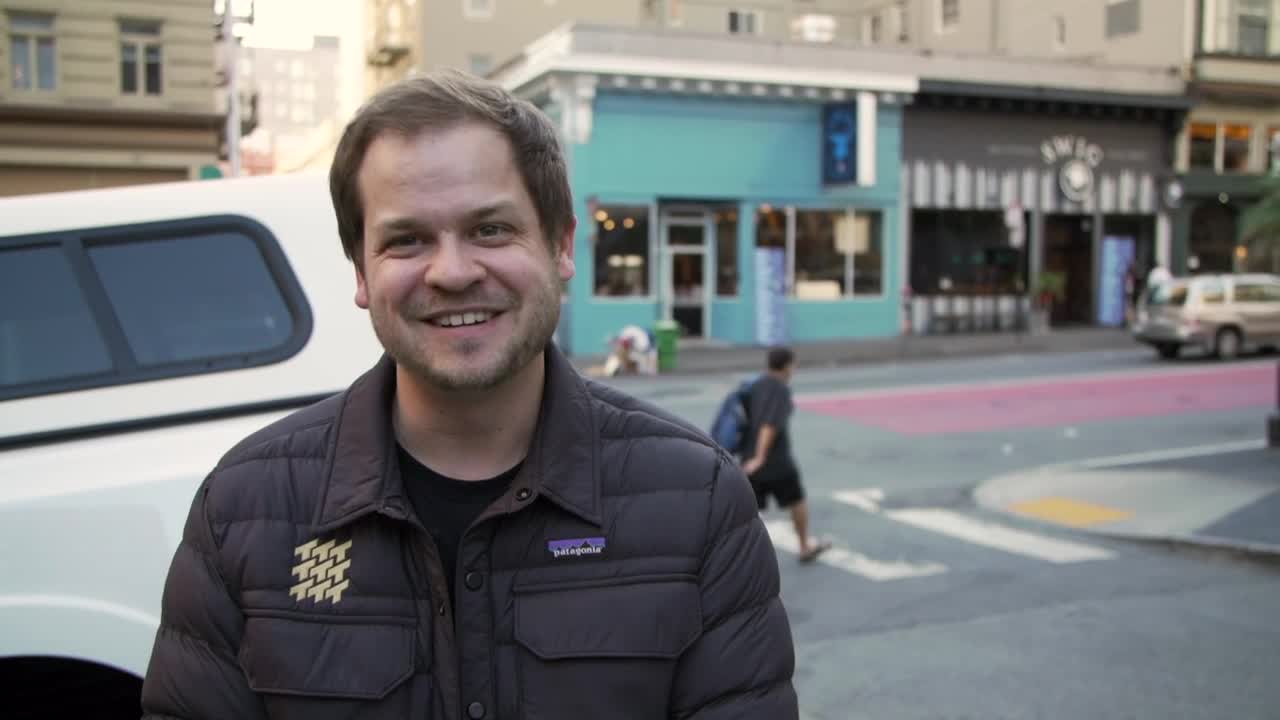
5. Each Night, Offload Your Footage and Organize It
Don’t lose footage you worked hard to collect. I offloaded my media cards each night onto a laptop with a cloud storage backup. That way, a spilled drink couldn’t ruin all my work. Once it was on my computer, I arranged all the shots in chronological order for each day.
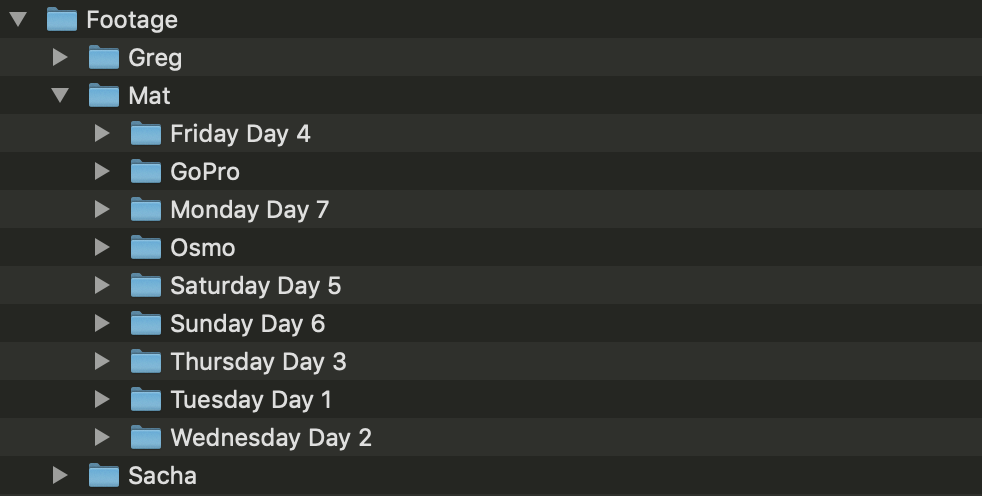
If I’m being really specific, I lay all of my footage per day on a video timeline in my video editing software. Then I comb through, trimming the fat and moving the usable content up one level on the timeline. That way, it’s already been meticulously picked through when I bring the good footage in from the next phase of my editing (when all the days are spliced together).
I will typically have each day clustered on its own group on my master timeline, and if there are common elements like “driving shots,” I will cluster those together, so I know where to pull from.
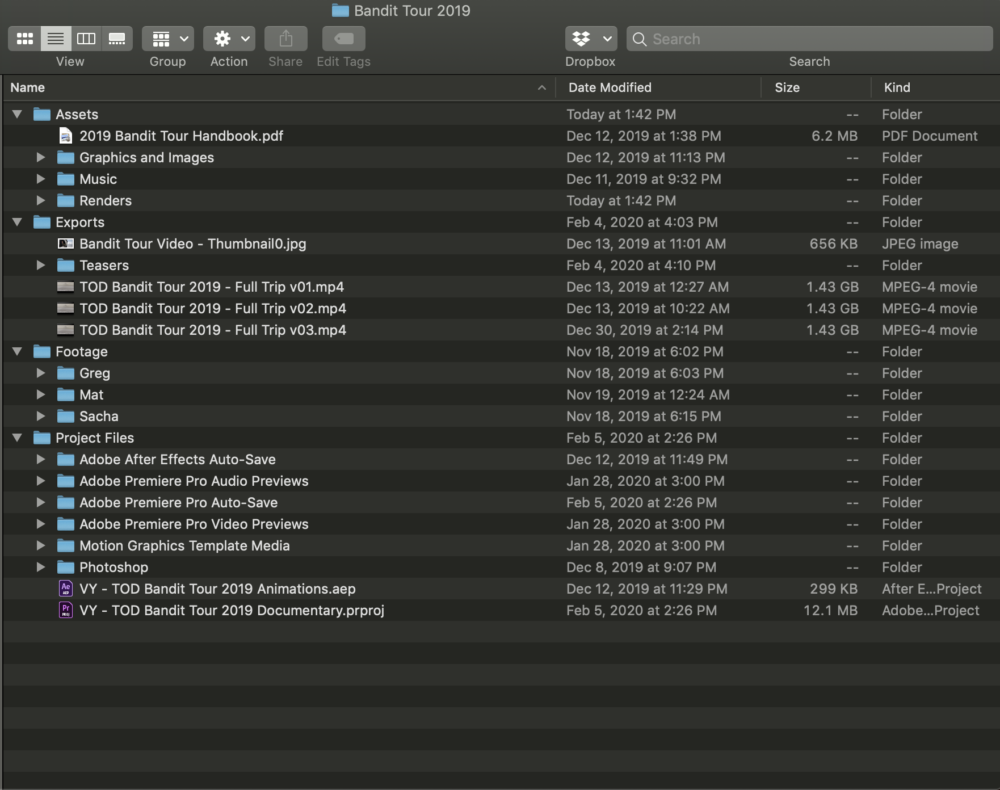
6. Assemble the Story in Post-Production
The magic happens in post-production. Sometimes you go into it knowing you’ve got incredible footage and exactly how you’ll assemble it. Other times, you have no clue, and you discover these incredible, inspiring quotes that you’d totally missed because you were so focused on your list of questions.
Post-Production Steps
- Re-read your pre-production goals. The people you planned to have interviews with—were those the right subjects? Did you get enough time with them?
- Conduct a first edit. Go through all the clips day by day and trim out the good stuff, leaving the rest behind.
- Conduct a second edit. Select the best clips from those remaining. Arrange them into an interesting story. By this stage, I had the Bandit Tour down to 34 minutes of mostly interviews.
- Conduct a third edit. Add b-roll, which adds context to the story and helps cover up jump cuts in your edit. That was my footage of sand dunes, of people laughing, and of cars passing. b-roll helps paint a picture of what your speakers are talking about.
- Add transitions and animated chapter titles. You see transitions throughout the Bandit Tour doc. Transitions and titles give audiences a moment to breathe and help establish the setting. They’re also useful if you didn’t get a shot of a road sign like I forgot to do in Tigard & Coos Bay.
- End it on a philosophical note. If the goal of your documentary is to educate, inspire, or transform, leave people on a note that prompts them to think. That could be an interviewee asking a powerful question or clips of everyone reflecting. In the Bandit Tour documentary, I ended things on a shot of the team all standing on a big beach rock with the ocean breaking around them. (The footage, interestingly, wasn’t mine. It came from a DJI Mavic Drone provided by Greg Malpass, Founder, and CEO of Traction on Demand.)
- Build a trailer. Trailers are short, two-minute teaser videos for the mini-doc. Take your cues from Hollywood: Pack the trailer with the most interesting stuff. Try to convey how exciting the documentary is without giving it all away.
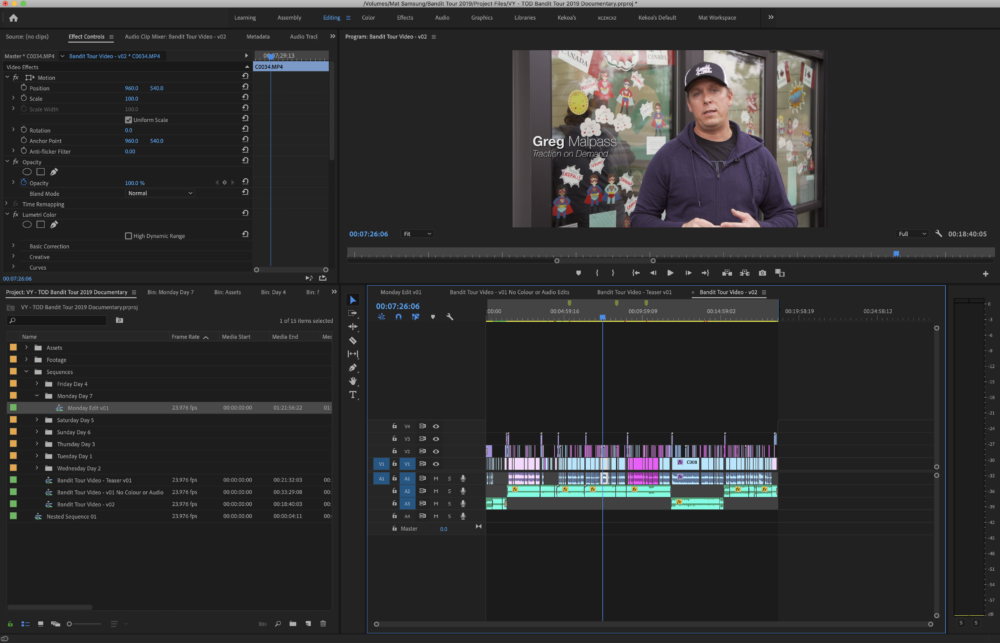
7. Share and Promote Your Documentary
You’ve spent a lot of time and energy making a documentary, now it’s time to send it off into the world so people can see it. There are a ton of different channels you can use to share your video, so think about who would be interested in seeing it and where they’d be most likely to come across it.
Brand Documentary Examples
Now that you’re thinking about them, you’ll start to see brand documentary examples everywhere.
1. Jabil
The manufacturing services company Jabil gave its team the editorial freedom to investigate the future of sustainable packaging and produce a documentary.
2. MailChimp
The email software firm MailChimp produced a series of mini-documentaries about small businesses and the passionate people behind them.
3. Patagonia
The environmentally-conscious clothing company Patagonia is a prolific creator of documentaries. Below is a Patagonia mini-documentary about the stories behind our clothing.
4. NETSCOUT
The cybersecurity company NETSCOUT partnered with legendary documentarian Werner Herzog to tell the story of the internet in “Lo and Behold.”
5. Volvo
Car maker Volvo filmed a documentary about a father and son team who, despite having no farming experience, got into agriculture and transformed the industry.
6. Coors Light
Coors Light sent photographer Ruben Wu and his journey to capture the blue ice walls of Peru’s largest glacier in a play on its iconic mountain-shaped logo. (It’s a mini-mini documentary—just four minutes long. Of all the documentary examples, this is my favorite.)
7. American Express
The credit card giant American Express produced a mini-documentary about the 70 million Americans without access to traditional banking services.
My Tips for Making a Documentary-Style Video
1. Find Your Overall Narrative
I’m a mid-tier planner. Some people like to script a documentary to a T. Others do zero planning and wing it. I’m in the middle.
If you’re capturing something like the Bandit Tour, you can’t script or storyboard it because it hasn’t happened yet, and you want to document reality, not direct people.
Through my questions and the people I choose to interview, I’m constantly guiding them to answer what I consider are the big questions the documentary considers. In the case of the Bandit Tour, that was, “What does it mean for a company to really give back? And how does that enable some pretty amazing nonprofit organizations to be even more impactful?”
Traction on Demand sends 110 of its 800 employees to Dreamforce each year, and those on the tour dedicate an entire week to volunteering. How interesting is that? How often do you have an opportunity to unplug like that? I asked people to reflect on that theme, and we got lots of great stuff.
2. Earn Your Interviewees’ Trust
Vidyard CEO Michael Litt, Laura Galbraith, and I got dropped into the Bandit Tour without knowing anyone. In that case, you’re starting from zero trust.
As it turned out, Traction on Demand’s request that I not film at night was really helpful because it gave me this perfect opportunity to get to know everyone off-camera. Then, they trusted me on camera and were a lot more open.
3. Stay Fresh
Filming all the time is exhausting. Take breaks, set down the camera, and stay sharp so that when interesting things happen, you notice and capture them.
4. Be Present
Sometimes in documentary work, you’re part of the experience you’re recording. There was a moment when we were all in a forested area near the grass-covered dunes, and everybody was told to close their eyes and take a breath. Well, if I did that, I’d miss capturing the shot of everyone doing it. My job is to convey that visually, so I had to shoot instead of breathe.
5. Obsess Over Your Audio Quality
Bad audio bothers people a lot worse than bad quality video. I highly recommend that if you buy no other piece of documentary equipment, you invest in a microphone that clips to your interviewee’s shirt. Decent ones can be as cheap as $50 on Amazon.
Excellent audio comes from just about the top of the speaker’s chest. Lavalier mics sit there and provide for great resonance. They also reduce ambient noises from entering the microphone, so you avoid popping P’s or hissing S’s, which can happen when the microphone is right in front of the speaker’s face.
6. Don’t Forget the Wrap-Up
Once the event you’re recording is over, keep the camera rolling. Get everyone’s take on what happened, their experience, and their in-the-moment reflections. Are they thrilled? Disappointed? How does what just happened change them?
7. Remember That Not Everything Has an ROI
Suggest another format if you’re being asked to create a documentary with an ROI. In the case of the Bandit Tour, what’s the return on doing good? Or on making a documentary about doing good? There were lots of costs involved, but I have to believe they were far outweighed by the experience of the team doing good. But just because you can’t affix a dollar amount to the outcome doesn’t mean it wasn’t worthwhile.
8. Close Your Documentary on an Expansive Note
The bus we used on the Bandit Tour, as well as the airstream and the Trans Am, are all packed away in storage now. Dreamforce is over. The team has returned to everyday work. What are we left with? Just the residual feelings of knowing that in our ultra-busy modern lives, a group of us took a week away to volunteer and really sit with the idea that we can all make time to give back if we want to. And by giving back, we learn about all the amazing people doing incredible, heartfelt work every day and grow closer to those around us.
I’m grateful to have been invited. I won’t forget the Bandit Tour, and I hope others learn about it and choose not to forget either. I hope people are inspired and sign up to become bandits. And if this documentary does anything, I hope it spreads that message.
Corporate Documentary FAQ
We’ll close out with some of the most frequently asked questions related to corporate or business-focused documentaries that I get asked.
Can I mention my product?
Try to avoid it unless it’s critical to the story. For instance, go ahead if viewers won’t understand what’s happening without you explaining it. But the focus should be on the subjects and their experiences.
Is making a mini-doc expensive?
It doesn’t have to be. Lots of great documentaries are made with equipment that costs hundreds of dollars rather than thousands.
How should I promote my documentary?
Just because you make it doesn’t mean people can find it. Work with your marketing team to create a video landing page and a promotional strategy.
